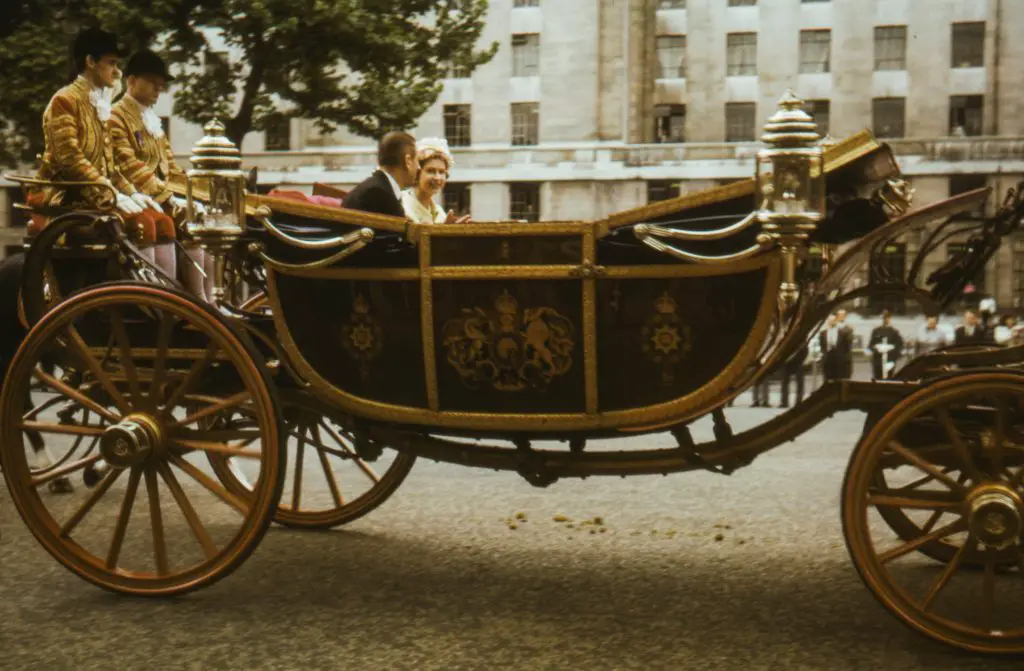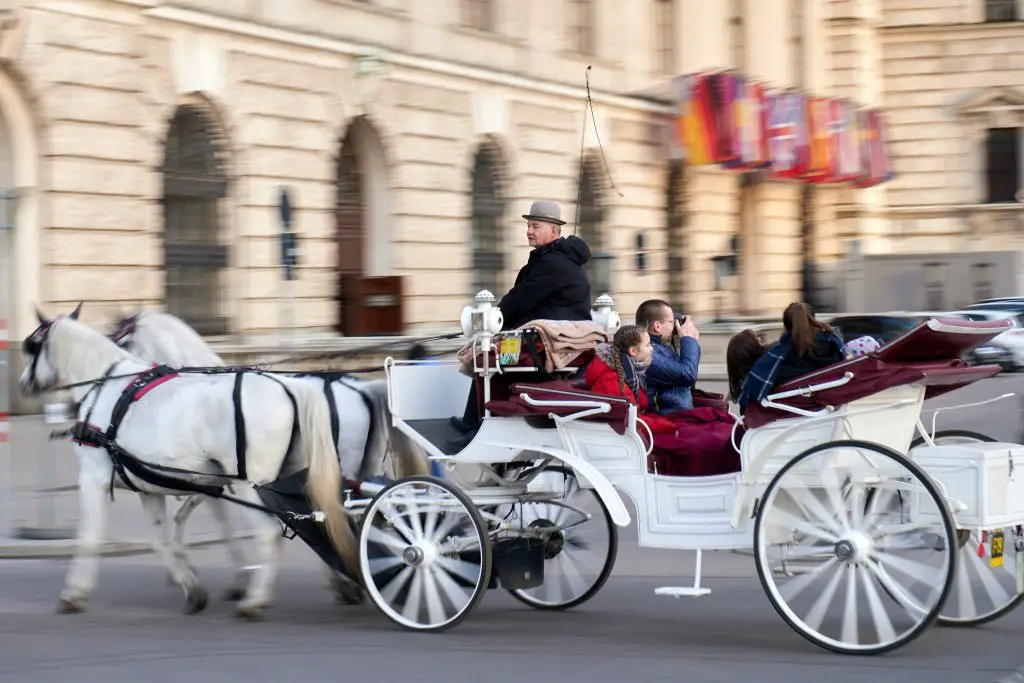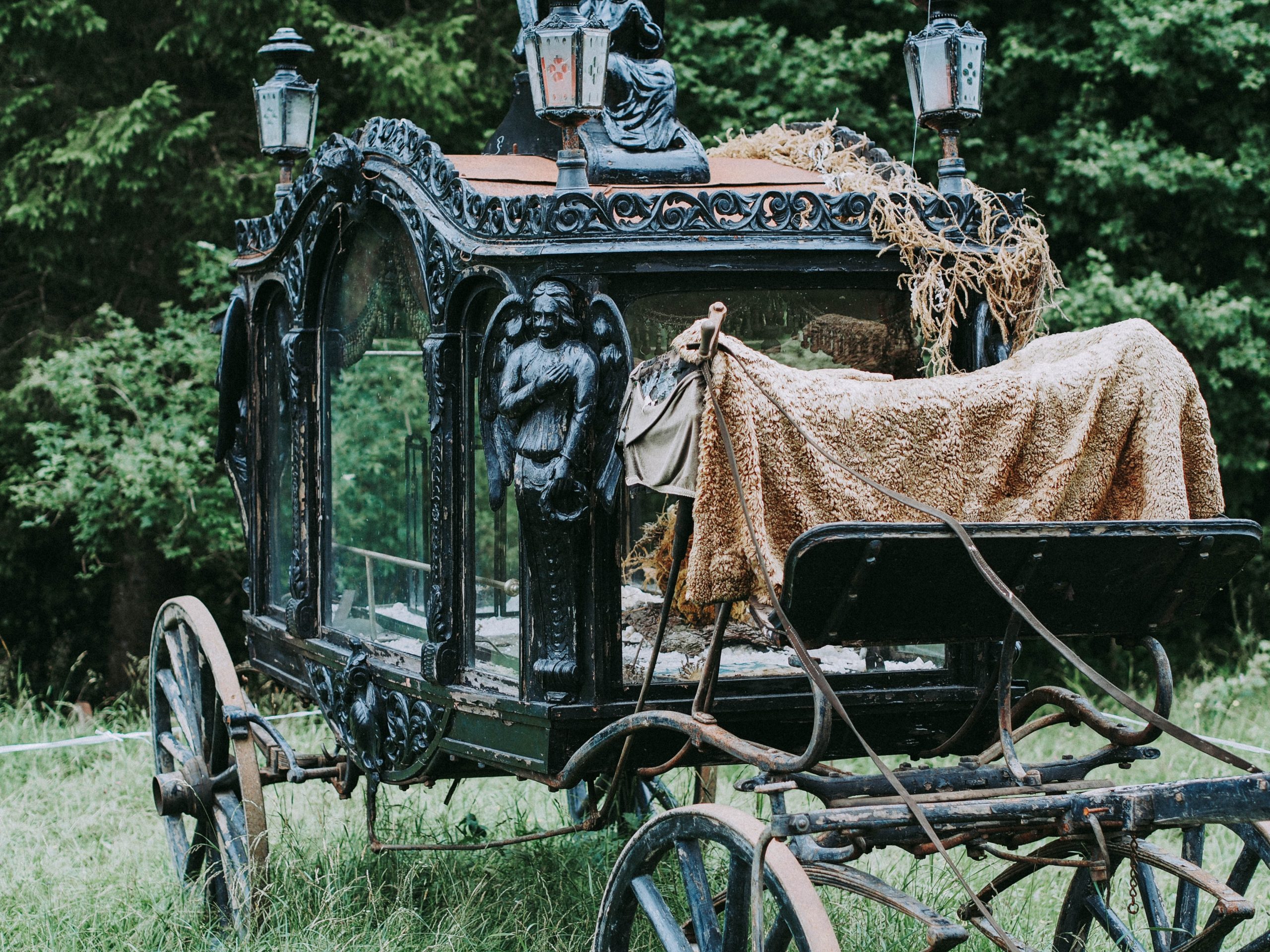The horse-drawn carriage has been a key method of transportation since the dawn of human civilization. Every prosperous nation has adopted or invented some form of carriage, and some are still used in the present day. Let’s go back to the beginning and explore the carriage industry’s long tale of ups and downs, booms and busts, innovations and transformations.
The First Carriages
The first carriages appeared in direct correlation with the invention of the wheel during the fourth millennium B.C. in ancient Mesopotamia. The area of land known as the Fertile Crescent was ideal for sustaining large communities, but the people needed a more efficient tool for farming and hauling essential goods.
The first wheel was actually the potter’s turntable, which turned on a horizontal axle and served as the blueprint for future wheels in other applications. The Sumerians who lived in Mesopotamia converted the potter’s wheel into a vertical axle with solid wooden discs, and thus wheeled transportation was born.
The Sumerians wasted little time putting a platform over the wheels to create the first carts and wagons. Then they hitched livestock to these rudimentary platforms, inventing the first proper animal-drawn carriages. The marriage between the cart and the horse was a crucial moment in human history.
Carriage technology quickly spread throughout Europe and Asia, but the growing cities in Mesopotamia, Egypt and the Indus River Valley made the swiftest advancements. Two main types of carriages emerged during this time, each serving a polar opposite purpose:
- Bullock carriage: The Bullock carriage is a large four-wheeled cart primarily pulled by oxen and used for hauling passengers or cargo. A yolk connected the animals and the wheels had a sturdy wooden tongue to help them stay aligned. The wheels started as simple wooden discs, but they would later include spokes and metal rims.
- Chariot: The original chariots were smaller two-wheeled carts pulled by one or two horses. They served to deliver fresh troops and weapons into ongoing battles, which made warfare a bigger and bloodier ordeal. They were also useful for hunting herd animals and navigating tight urban streets.
Bullock carriages and chariots were foundational pieces of early human civilization. They allowed for faster food production, urbanization and population growth. These chariots made farming and travel much easier, which inevitably led to more conflicts between neighboring communities. With the invention of the carriage, an age of empires had begun.
Expansion of Empires
The carriage was an indelible part of human civilization from the rise of ancient Mesopotamia to the fall of the Holy Roman Empire. Every empire that rose to prominence between 3,000 B.C. and 1500 A.D. relied on the carriage for expansion outside its original borders. Overland trade routes from Spain to China were lined with carriages carrying people and goods.
The carriage industry gave rise to many well-paying occupations that helped families and economies flourish:
- Coachman: The main person who drives the carriage.
- Footman: A servant who attends to the riders or clears the path ahead for his master.
- Outrider: An attendant on horseback who guards carriage trains or rides ahead to scout the path.
- Carriage starter: An official who directs the flow of traffic and assists with the onboarding of passengers at busy stopping points.
- Hackneyman: A contractor who hires out horses and carriages.
- Carriage horse breeder: Horse breeders who specialize in raising horses to haul carriages for long distances.
- Road horse breeder: Horse breeders who specialize in raising horses for outriders, footmen and other single riders.
- Coach dog breeder: Dog breeders who specialize in raising dogs to run alongside carriage trains for protection.
Due to their increase in value, carriages became symbols of wealth and status. The wealthy were known as “carriage folk” because they could afford large carriages with enclosed wagons and proper carriage horses. The poor were lucky to own two-horse carriages with open wagons and trained road horses.

Carriage designs became extravagant, serving an aesthetic purpose along with a practical objective. They could only travel between 4-12 miles per hour in good condition, which meant all onlookers could closely scrutinize them. The wealthy used their travels to demonstrate their class and sophistication, much like they do with luxury cars today.
They also had ceremonial and athletic purposes, such as the famous chariot racing games in Roman times. Royal families would exclusively travel in special carriages depending on the event. They often had a unique carriage for weddings, coronations, holidays, religious pilgrimages or state processions.
For much of this time period, the mechanics of carriages remained largely unchanged. Each culture customized the carriage’s appearance, but the wagons themselves still had the same riding experience. People felt every bump in the road, and the design made the animals uncomfortable as well. That all changed with one crucial invention.
Creating a More Comfortable Carriage
Around the 14th century A.D. in the twilight of the Holy Roman Empire, a crucial piece of automotive technology emerged — the suspension. It played the same role as it does with modern vehicles, absorbing the road’s turbulence and providing a more comfortable ride. After the invention of the suspension, engineers could develop bigger and faster carriage models.
Another development made carriages more comfortable for the animals as well — the collar harness. Originally invented in China, the collar harness kept the carriage’s weight on the animal’s shoulders instead of its neck. This addition allowed horses to pull five times more weight and maximize their daily distance.
Other noteworthy advancements during the late Middle Ages and Renaissance period include steel springs and wheel frames, leather braces, pivoting front axles, barrel-shaped roofs and wheels with varying numbers of spokes. They all contributed to a faster and more comfortable ride for humans and animals alike.
These advancements gave rise to the first “coaches,” which had larger rear wheels and shaped bodies that had a smoother drivetrain and could make turns more easily. They could also be pulled by a single horse, which made them more affordable. However, the biggest carriages for long excursions like the Omnibus and Conestoga Wagon still required multiple animals.
English historian Arthur Engram listed 325 types of carriages developed between the 1760s and the 20th century, from the Bullock to the war chariot. Carriages were still symbols of both practicality and social status in the 1800s, subject to changing fashions and attitudes just like every other. Attitudes would permanently change at the start of the industrial revolution.
The Industrial Revolution
The coaches of the Renaissance period gave people a taste for fast travel, and now they wanted something faster. The Industrial Revolution came at a perfect time, as steam propulsion technology generated more interest in the mid-1800s. Steam engines had already been around for almost a century, but they now had a much wider range of applications.
Steam-powered boats and trains soon became the preferred method of transportation in the developed world. Experiments with chemical fuels also began around this time, which led to the first internal combustion engines. At first, people called gas-powered automobiles “horseless carriages” because the chassis designs were so similar.
The age of the modern automobile unofficially began in 1886 when German inventor Karl Benz earned a patent for his “Benz motorcar.” Hundreds of other manufacturers followed his blueprint, with American manufacturer Henry Ford perfecting the art of mass production. Once Ford’s assembly lines got up and running, the carriage’s fate was sealed.
By the turn of the century, steam and gas power had thoroughly overcome animal power and the carriage was obsolete — at least for most people. The middle and upper classes could afford their own vehicles, but the poor still relied on carriages. One could see horse-drawn carriages and gas-powered cars roaming the streets of major cities together well into the 1930s.

Modern-Day Carriage Applications
Although carriages are no longer the world’s primary means of overland transportation, they continue to have some modern-day applications. Minority groups such as the Amish aren’t allowed to use motorized vehicles or electronics, so they still rely on carriages for daily travel just like their ancestors.
Royal families in Europe — most famously the English Royal Household — also carry on the tradition of riding in carriages for special occasions. The Windsors have the most extravagant carriage to themselves, while commissioners, ambassadors and other high-ranking officials follow in smaller carriages.
Carriages are also popular accessories in the tourism industry. Their slow pace makes them perfect for sightseeing in both urban and rural areas. Travelers are most likely to find carriage tours in European and American cities, as well as historical sites. The cities of London, Vienna, Amsterdam, Bruges and New Orleans have the longest-running tours.
The Carriage — A Relic of the Past
Aside from a basic riding horse, the carriage was the most popular and efficient means of overland transportation for almost 5,000 years. It goes all the way back to the development of the first major cities in the Fertile Crescent and remains an important cultural symbol today. It might be a relic of the past for transportation purposes, but it will always be an essential part of human history.

Jack Shaw is a freelance writer and lover of history. He’s the senior writer of Modded, a men’s lifestyle publication, and has contributed his expertise to YFS Magazine, Safeopedia, Tiny Buddha and more.





